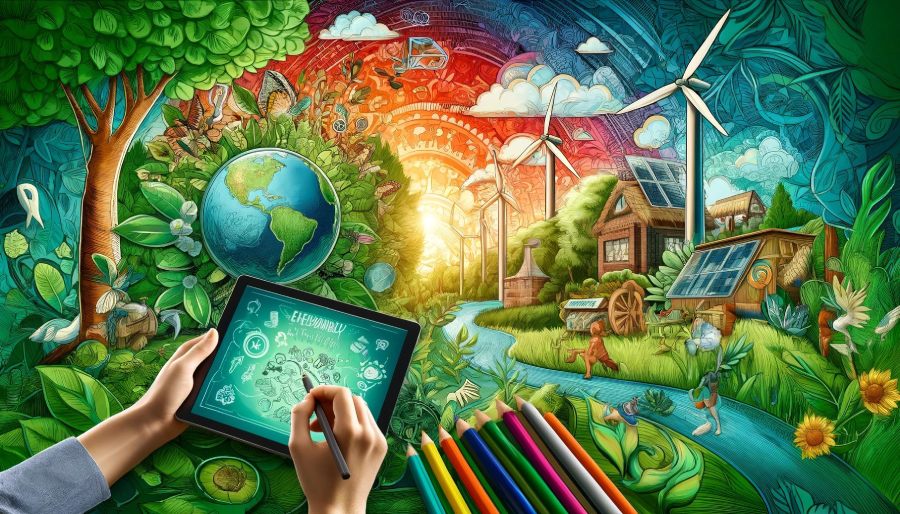In an era where environmental sustainability is more crucial than ever, the art world is turning towards greener alternatives to traditional practices. Among these, digital coloring is a prime example of how technology can foster creativity while protecting our planet.
“Eco-Friendly Digital Coloring: Sustainability Meets Art” delves into the environmental benefits of digital coloring activities, highlighting how this shift not only leverages modern technology but also instills values of eco-consciousness in young artists.
The Environmental Impact of Traditional Art Supplies
While enriching, the traditional coloring of Elf pages and art activities often has an environmental cost. The carbon footprint can be substantial, from producing paper and coloring materials like crayons, markers, and pencils to the waste generated by unused or discarded art supplies.
Digital coloring presents an opportunity to mitigate these impacts by transitioning to a more sustainable mode of artistic expression.
Advantages of Digital Coloring for the Environment

- Reduced Paper Usage: Digital coloring eliminates the need for paper, significantly reducing the demand for this resource and the associated deforestation and water usage.
- Minimized Waste: By moving art activities online or to digital devices, the waste generated by discarded art supplies is drastically lowered, contributing to less landfill waste.
- Energy Efficiency: Advances in technology have led to more energy-efficient tablets and computers, meaning the environmental impact of digital coloring is continually decreasing.
- Promotion of Recycled Electronics: As digital coloring gains popularity, there’s a growing emphasis on recycling and repurposing older electronic devices for art, further contributing to environmental sustainability.
Instilling Eco-Consciousness in Young Artists
Digital coloring reduces environmental impact and educates the next generation about sustainability. By engaging with digital art, children learn the importance of conserving resources and minimizing waste from an early age, values that they are likely to carry into adulthood.
How to Make Digital Coloring More Sustainable
While digital coloring is inherently more eco-friendly than traditional methods, there are ways to enhance its sustainability further:
- Use Energy-Efficient Devices: Opt for tablets and computers with high energy efficiency ratings.
- Promote the Use of Renewable Energy: Encourage charging devices with renewable energy sources when possible.
- Educate on Digital Responsibility: Teach young artists about the importance of responsible digital consumption, including managing screen time and understanding device energy use.
“Eco-Friendly Digital Coloring: Sustainability Meets Art” presents a compelling case for the adoption of digital coloring activities as a means to foster artistic creativity while protecting the environment.
As we embrace modern technology, we can instill a sense of responsibility and eco-consciousness in young artists, ensuring a greener future for the art world and our planet. In our Easy Smart Learning Education, we believe in these values.
want. The terms and rights for everyone from every country or religion are equal.
Read Also:
- Russia’s Lunar Lander Crash On The Moon’s Surface
- Web Developer: Best Low-Stress, High-Pay Job in America?
- Best Vijay Kedia Portfolio Stocks – Hidden Gems For Long Term?





